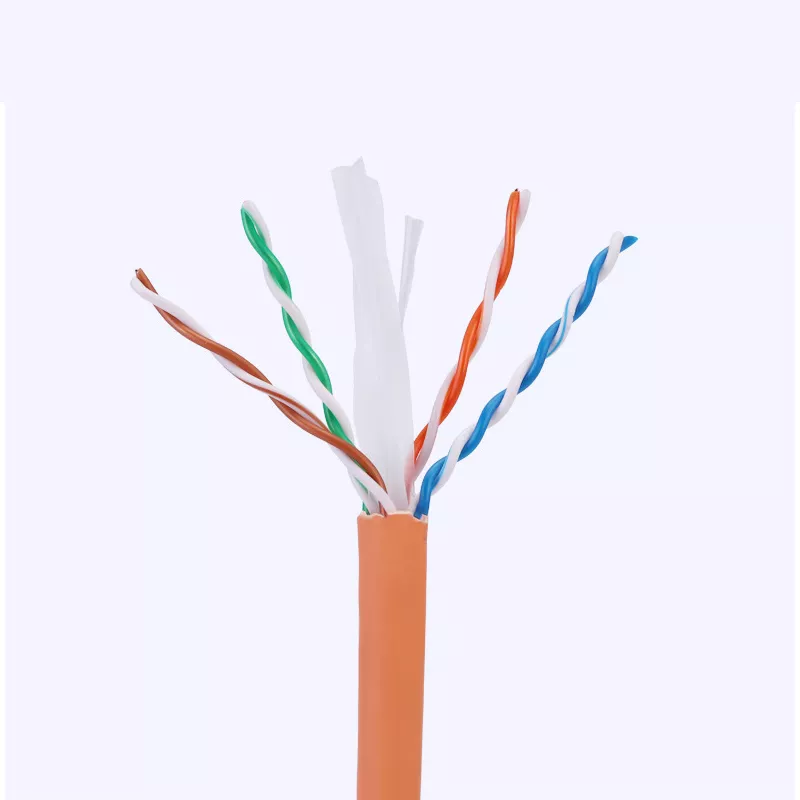
Network Cables: Difference Between Indoor and Outdoor Use?
Views: 30 Author: Site Editor Publish Time: 2022-03-28 Origin: Site
When installing network cables, indoor and outdoor requirements for network cables are different. If you do not pay attention, the failure rate of network cables will increase later. So how do we need to wire and maintain it?
Indoor network cable VS outdoor network cable
The most significant difference between the outdoor network cable and the indoor network cable is the outer skin. The outdoor network cable has two layers of the outer skin, while the indoor network cable has only one outer layer.
The outer skin of the outdoor network cable is thicker than the indoor one. A layer of PE waterproof layer is added. During the wiring process, it can resist tension and compression, and it will not easily damage the outer skin and damage the copper core. The network cable arranged outdoors needs to resist rain and hot sun. If the outer sheath is not good enough, the outer sheath is easily damaged, and the conductor of the network cable cannot be used.
Indoor network cable, maintain the flexibility of indoor wiring to a greater extent, when wiring is routed through the tube, pay attention to protect the outer skin of the indoor network cable, especially when pulling the cable, do not use too much force, it is easy to damage the wire core.
PS: When the outdoor network cable passes through the wall indoors, can reduce the damage to the network cable can be reduced, and the outdoor network cable can also be used in a humid place indoors.
2. About indoor network cable &outdoor network cable
·Category 5e shielded outdoor grade highly flexible Ethernet cable, RJ45/RJ45
The outdoor grade flame retardant thermoplastic elastomer (FR-TPE) jacket is not only oil and UV resistant but also meets the UL standard CMX outdoor and CM flame retardant grade requirements. Rated number of bends: 1 million times at 2.44 inches (6.2 cm, 10 times the minimum outer radius of the cable); 10 million times at 4.88 inches (12.4 cm, 20 times the minimum outer radius of the cable).
·Category 6e Outdoor Cable Assembly, RJ45/RJ45
Depending on the specifics of the outdoor environment, the outer sheath protects against moisture and UV rays. It has dual IEC-332-1 and UL-CMX flammability ratings for termination to IDC connectors for industrial Ethernet and outdoor applications.
·Category 5e outdoor patch cord, RJ45/RJ45, with waterproof gasket
When used in outdoor environments, the rubber-injected jacket protects against moisture. It has a built-in feed-through gasket that allows the cable to pass through the housing while maintaining a watertight seal when used outdoors. A UV protective jacket protects outdoor cables from sun damage.
·Category 6 shielded 45 degrees angled jumper, straight through/45 degree right outlet.
Indoor wiring will encounter many tight spaces. This angled network cable has a dedicated channel splitter and load bar to achieve Category 6 performance while maintaining smooth bends and shielding functions, ideal for complex industrial applications. Environmental use.

3. The general process of cabinet network wiring
Measure how long the line needs to be? Overall cable management, according to the position where the patch panel is placed and the distance between the cables entering the cabinet from the outside, calculates the length of the network cable on the patch panel and installs it in the cabinet. If the cable is placed in the cabinet for too long, it will easily cause unsightly conditions; the post-processing line is troublesome.
Comprehensively consider the routing of cables after entering the cabinet from the upper or lower part of the cabinet. Try not to bend or bypass some things and stick to the cabinet as much as possible. Considering that the routing direction cannot affect the entry of subsequent network equipment, the staff has certain predictability.
2. Cutting the length measured in the first step
Cut off the excess, pay attention to try to avoid affecting the appearance as much as possible, and leave a length of ten to fifteen centimeters, including the length of cutting off the foreskin and marking the patch panel. It will be challenging to manage the cables, so there is no need to put the cables into the cabinet from the outside.
3. Line management
The steps of wiring are as follows:
A. Use a cable tie to tie the cable where the root of the cable is exposed. If there are too many cables, divide the number of the network cable into two or more parts from the middle. Still, it is necessary to ensure that each part of the divided network cable is continuous because This makes the next step easier.
B. After most of the network cables are tied, start to use the wiring board to organize the cables. According to a convention, pass the cables from the back of the wiring board.


